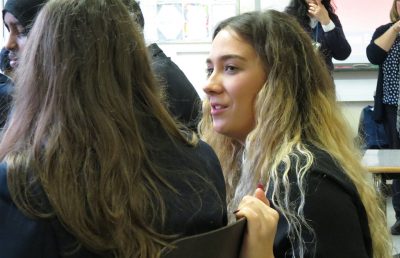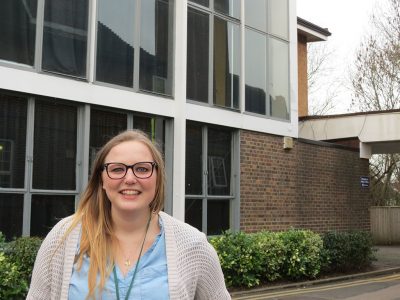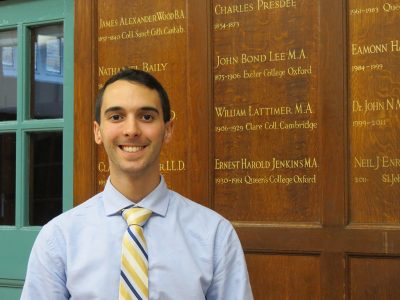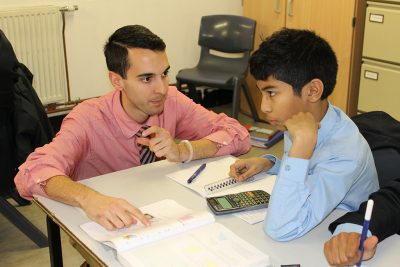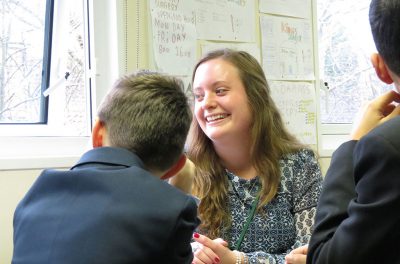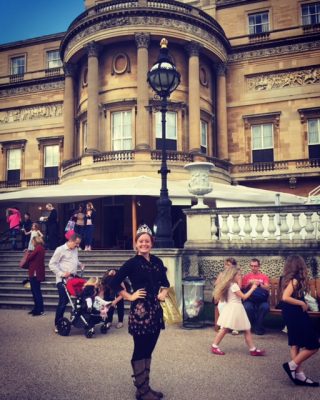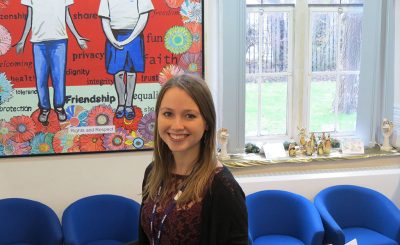
Lauren Lukasik ’15 (ED), ’16 MA spent the fall semester of her master’s year in England as part of the Neag School’s Study Abroad Teaching Internship Program. In England, Lukasik interned at Roxeth Primary School, a highly diverse, multifaith school in suburban London, where about 40 different languages are spoken by the student body. She is a graduate of the Neag School’s Integrated Bachelor’s/Master’s program.
Hometown: New Fairfield, Conn.
Concentration: Elementary education, science
What differences have you seen in the U.K. school system versus what you have experienced in Connecticut? “The students [in London] talk about culture openly, and they embrace it. … I think they don’t judge each other based on their differences, because they openly talk about their differences.”
What are you most proud of having accomplished during this semester abroad? “There was a student who came in about three weeks into my placement from Italy, speaking no English, so I just took the opportunity, and I’ve been working with him every week. I did not expect to have that opportunity fall into my hands. … We started with basic letters and numbers, and now he’s writing and reading sentences, doing addition and subtraction, and a lot of the activities the rest of the class is doing. That’s been really great. It’s kind of crazy to believe I impacted him so much. I’m proud of that.”
“I’m more aware of different students and abilities and cultures, being in such an urban area, and working with staff members of different cultures.” Lauren Lukasik ’15 (ED), ’16 MA
What kinds of support have you received from the administrators or teachers at Roxeth as part of your intern experience? “I ask them a lot of questions, and they always are welcoming in giving me answers and giving me information about the school. They’re willing to let you do new things, and they want you to learn. They’re really open to letting you do what you want to do to become a better teacher.”
What would you say are among the greatest strengths of the Neag School’s teacher education program? “I think all of the different placements we’ve been in. We have one a semester, except student teaching was a full year. We’ve had an urban and suburban [placement], so we have seen different schools. I loved student-teaching. I know [most teacher education programs] do that, but I think the way the Neag School sets it up is really good. The first semester, we just observe and help, learn about the class and the students, and in the second semester, we get to teach. I like that we have to know the kids better in the class, and then we got to student-teach.”
How have you changed over the course of your time studying in London? “I think I’m a lot more independent, even just living and commuting in the city, because I live in a really small town [in Connecticut]. I think I’m more aware of different students and abilities and cultures, being in such an urban area, and working with staff members of different cultures.”

